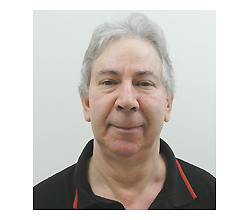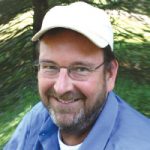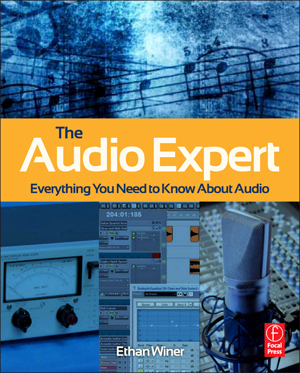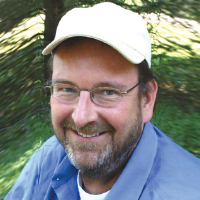The Audio Expert, a new book by Ethan Winer, exhaustively covers a plethora of important technical aspects of audio. But it goes much further, discussing and explaining the relationship between audio and a wide range of closely related factors. In short, it challenges you to think, to seek a deeper understanding.
Just released by Focal Press (and available here), I received an advance copy and have had a hard time putting it down. Winer, who has worked with audio for more than 40 years, is a mix engineer musician, product designer, author (and more), and in 2009, he presented the Audio Myths seminar at the AES Convention in New York that’s still generating buzz.
I recently caught up with him to discuss the book as well as a range of other topics.
KC: What was your primary motivation for writing the book?
EW: Two reasons – one is to dispel the many myths I see repeated endlessly in audio magazines and web forums. Most aspects of audio science have been understood fully for more than 50 years. Yet some people still believe that competent wires can sound different, that typical amounts of phase shift are audible, that jitter is a problem, that digital “summing” in DAW software is somehow flawed, and so forth.
Almost daily I see posts in audio forums by people with limited funds asking if they really need to spend a lot for a microphone, preamp, converter, or external summing box to get professional results. So my goal is as much consumerism as education, to help people spend wisely.
The other reason is to explain how audio really works to those who are interested. Forty years ago, recording engineers were as much “real” engineers as they were recordists. Back then, most knew how to solder up a patch bay and align a tape recorder, and many could read schematics and do at least minor repairs. George Massenburg is a perfect example – he’s renowned for the quality of his recordings, as well as for designing the first parametric equalizer.
When I started recording professionally in the 1970s, audio magazines included technical articles and DIY plans, and manufacturers were proud of their high fidelity and provided specs for distortion and frequency response. Today, a loudspeaker review is likely to state the size of the woofer but not its frequency response, which of course is what really matters! And you almost never see distortion specs or off-axis response. If an active loudspeaker includes distortion specs, it’s usually for the power amplifiers only, not the complete system.
Many mix engineers have the talent to make music sound great, but without understanding the engineering and science behind the gear they use. I appreciate that some people don’t care at that level, but many do. In my estimation, the pro audio press has let us down in this regard, dumbing down content, and even perpetuating many of the same myths you read in hi-fi type magazines.
Your experience is more with recording than live sound. What’s the value of the information you’re providing for the live sound practitioner?
The Audio Expert is a comprehensive “reference” type book covering all aspects of audio, so there’s plenty for everyone – even interested audiophiles. It’s written for people who want to understand audio at the deepest, most technical level, but is presented using plain-English explanations and mechanical analogies with minimal math.
Besides describing how many different audio devices are used, it also explains how they work internally. The book brings together the concepts of audio science, aural perception, musical instrument physics, acoustics, and basic electronics, showing how they’re intimately related. So while I don’t address directly the challenges facing live sound engineers, there’s a huge amount of educational content. It’s definitely not a “Dummies” type book for beginners!
If you could recommend one chapter as the “must read” of the book, what is it, and why?
Perhaps most important is explaining in great detail how fidelity is defined, with included audio examples people can play on their own systems to determine at what level distortion and other artifacts are audibly damaging. This is addressed mainly in Chapters 2 and 3, though this type of information is sprinkled liberally throughout the book.
Besides the 65 demo audio files available on the book’s web site, there are also 31 videos and five audio-related software programs.
















